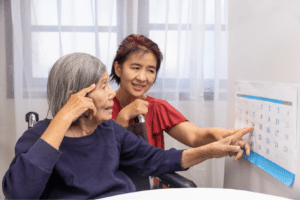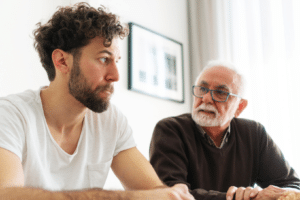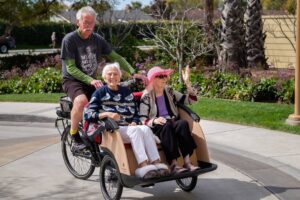It’s every senior caregiver’s worst nightmare: you do everything you can to provide your senior with the best in home care, only to learn they’re being abused by the very people you trusted to help them. You may feel angry, betrayed, and heartbroken for your senior. The sad truth is, elder mistreatment is far more common in our society than we realize. Unscrupulous individuals will always be out there, ready to prey on unsuspecting, innocent elders. You may not be able to stop every one of them, but you can take steps to avoid having your loved one become a victim again.
What things lead to elder mistreatment?
Although elder mistreatment can occur anywhere at any time, there are particular circumstances that make it more likely. These include:
Physical limitations
If your elderly loved one has a disabling physical condition, they may not be able to understand, prevent, and even see when abuse is taking place. Here are a few examples:
Physical or emotional abuse: If you elder is bedridden, in a wheelchair, or unable to leave the house unassisted, they may not be able to get away from a caretaker who is physically or emotionally abusing them. There are many signs of physical and emotional abuse – both subtle and overt – so it’s important to know what they are.
Neglect: If a caretaker is neglecting your elder (which can include not feeding and bathing them, or not dispensing their medications), they may be unable to notify others. Speech issues like dysphagia can prevent them from verbalizing what’s wrong, and even a bad case of arthritis in the fingers may mean they can’t dial the phone to call for help.
Financial abuse: Let’s say your senior has poor vision, or suffers from another condition that makes it difficult for them to oversee their own finances. This makes them an easy target for those who would financially exploit them. If they have regular checks coming to their home (from agencies like the Social Security Administration, or pensions and investments from former employers), this simplifies the abuser’s task even more. All they need to do is say they’ll “help” the senior with money management, and they can begin lining their own pockets.
Cognitive limitations
Just like physical limitations, cognitive constraints like confusion, dementia, and forgetfulness can be just as dangerous when it comes to opening the door to abuse. Sometimes, the senior may not have the wherewithal to understand that abuse is happening (for instance, they don’t know they’re not getting their medication on schedule, or at all).
In severe cases, the victim may not even remember the abuser or their past behavior on a day-to-day basis. Every time they’re victimized is like the first time, after which the slate is wiped clean. This can set them up for an endless cycle of elder mistreatment.
Isolation
Finally, if your senior lives alone or others rarely come to visit, they are at an increased risk for elder mistreatment. The senior may be more likely to invite others into their home simply because they are lonely and in need of social contact. If relatives they trust live far away, they can’t always be there to point out the abusive or suspicious behavior of visiting individuals.
When it comes to elder mistreatment, knowledge is power
Being aware and educated is the first step when it comes to preventing elder mistreatment. Now that you know some of the basic risk factors, be sure to share this knowledge with others. Those who work in senior care particularly need to know how to spot potential abusers, so they can address the situation right away. If you think your senior – or one that you know — is a victim of elder mistreatment, call your local Adult Protective Services branch. They’ll tell you what steps to take to safeguard the one you care about – both now and in the future.
If you are unsure of how to best help an aging loved one, the trained and compassionate staff at the Institute on Aging is here to help you make that decision and gain the best in at-home senior care. Contact us to find out more.










